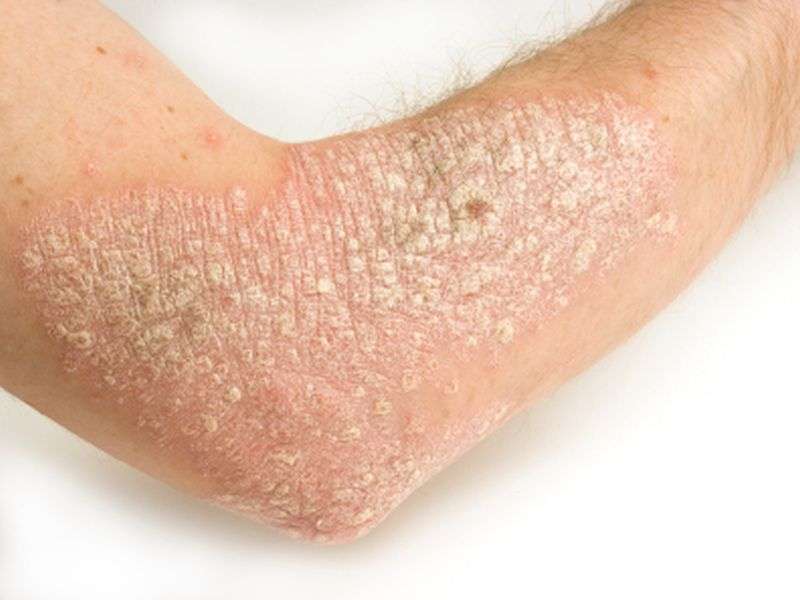(HealthDay)—The incidence of psoriatic arthritis (PsA) is 2.7 cases per 100 psoriasis patients, with risk factors including severe psoriasis phenotype and low level of education, according to a study published in the April issue of Arthritis & Rheumatology.
Lihi Eder, M.D., Ph.D., from Toronto Western Hospital, and colleagues conducted a prospective cohort study involving psoriasis patients without a diagnosis of arthritis. Information was collected regarding lifestyle, comorbidities, psoriasis activity, and medication use. Using an event per person-years analysis, the annual incidence of PsA was estimated.
Data were obtained from 464 patients who were followed for eight years. The researchers found that 51 patients developed PsA, with an annual incidence rate of 2.7 cases per 100 psoriasis patients. In multivariate analysis, severe psoriasis (relative risk [RR], 5.4), low level of education (university/college versus high school incomplete: RR, 0.22; high school graduate versus high school incomplete: RR, 0.30), and use of retinoid medications (RR, 3.4) correlated with the development of PsA. Psoriatic nail pitting and uveitis correlated with development of PsA in multivariate models with time-dependent variables (RRs, 2.5 and 31.5, respectively).
"The incidence of PsA in patients with psoriasis is higher than previously reported," the authors write. "A severe psoriasis phenotype, presence of nail pitting, low level of education, and uveitis are predictive of the development of PsA in patients with psoriasis."
More information:
Abstract
Full Text (subscription or payment may be required)
Copyright © 2016 HealthDay. All rights reserved.






















